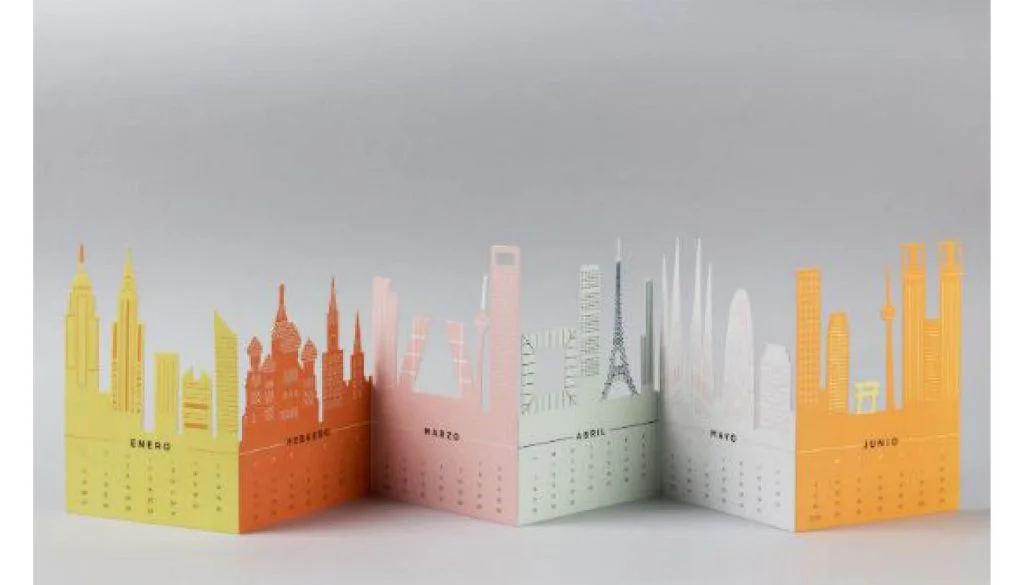Potential Of Sell Calendars on Amazon.
Selling calendars in the U.S. holds significant potential, as they remain popular for personal and corporate use. It is expected to continue growing at a CAGR of 9.23%, reaching USD 48.80 billion by 2030. Many people still prefer physical calendars for organization and decoration, making them a stable product, particularly around the holiday season and new year when demand spikes.
On Amazon, the opportunity is even greater. Amazon is the leading online retailer in the U.S., with over 60% of its sales coming from independent sellers. Categories like home and office supplies, where calendars fit in, are among the most popular. Moreover, more than half of U.S. consumers start their product search on Amazon, and shop there at least once a week, increasing the chance of discovering niche products like custom or themed calendars.
Amazon’s Fulfillment by Amazon (FBA) service can also help with storage and shipping, making it easier for sellers to focus on growing their businesses. With free and fast shipping as a key draw for Amazon Prime members, sellers who offer Prime shipping see higher sales.
Identifying Your Calendar Type
Identifying Your Calendar Type
It’s essential to identify the type of calendar you want to create. The type you choose can significantly influence your target audience and overall success. Different styles, themes, and formats appeal to various customers, so understanding your options is key to standing out in the marketplace.
Consider Your Interests and Strengths:
Think about what you are passionate about. If you have a talent for photography, consider creating a photo calendar that showcases your best work. If graphic design is your forte, artistic or motivational quote calendars could resonate with buyers looking for inspiration.
- Explore Popular Themes:
Research current trends to find themes that are in demand. Common calendar themes include:
- Nature
- Pets
- Travel
- Fitness
- Holidays
- For example, wellness and self-care calendars have gained popularity, appealing to individuals focused on mental health.
- Decide on the Format:
Consider the format of your calendar, as it can affect customer preferences. Options include:
- Wall calendars: Ideal for decoration and visibility.
- Desk calendars: Practical for daily planning.
- Planners: Useful for organizing tasks and schedules.
- Customization Options:
Personalized calendars, where customers can add their own photos or important dates, can be very appealing. Customization allows buyers to make the calendar unique to them.
Create Eye-Catchy and Unique Calendar Designs
Creating eye-catching and unique calendar designs is essential for standing out on Amazon. A visually appealing calendar can grab attention and encourage customers to make a purchase. Here are some tips to help you design calendars that people will love.
- Choose a Theme: Start by picking a theme that reflects your interests or expertise. Popular themes include nature, travel, pets, or inspirational quotes. A strong theme will guide your design choices and create a cohesive look.
- Use High-Quality Images: If your calendar features photos, make sure to use high-resolution images. Clear, bright pictures will attract customers and make your calendar look professional. Consider using your own photography or sourcing images from reputable stock photo sites.
- Incorporate Colors and Fonts: Choose colors and fonts that match your theme. Bright colors can create excitement, while soft colors may convey calmness. Make sure the text is easy to read, so customers can quickly see important dates and notes.
- Add Personal Touches: Including unique elements, like hand-drawn illustrations or custom artwork, can make your calendar stand out. Personal touches add character and can make your calendar more relatable to buyers.
- Consider Practical Features: Think about including features like space for notes, holidays marked, or stickers. These additions can enhance usability and make your calendar more appealing.
Setting Up an Amazon Seller Account for Calendar
Gated Category: Calendars fall under a restricted category on Amazon, meaning you need approval before listing your products.
Consumer Safety: Make sure your calendar products comply with Amazon’s safety and quality requirements. This includes proper packaging, labeling, and adherence to all relevant standards.
- Choose Your Selling Plan: Amazon offers two selling plans: Individual and Professional. The Individual plan is best for beginners selling fewer than 40 items per month, as there are no monthly fees, but you’ll pay a per-item fee.
- Create Your Account: Visit the Amazon Seller Central website and click on “Register now.” You’ll need to provide your email address, a password, and some basic information about your business.
- Provide Business Information: You’ll need to enter your business name, address, and contact information. If you have a registered business, you should use that name. Amazon will also ask for your bank account information to set up payments.
- Complete Identity Verification: Amazon requires you to verify your identity. This may involve providing a government-issued ID and additional documentation. Follow the instructions carefully to ensure a smooth verification process.
- List Your Calendars: Once your account is set up, you can start listing your calendars. Provide detailed descriptions, high-quality images, and set competitive prices. Use keywords to help your products appear in search results.
Do Amazon Marketing or Hire an Amazon Consultant
When it comes to promoting your calendars on Amazon, you have two main options: manage your marketing yourself or hire an Amazon consultant. Each approach has its benefits, and the right choice depends on your skills, budget, and goals.
A well-designed Amazon storefront is crucial for showcasing your calendars effectively. It’s your brand’s face on Amazon and can significantly impact customer perceptions. If you have design skills, you can off create a storefront that highlights your unique calendar themes and makes it easy for customers to navigate. However, if design isn’t your strong suit, hiring a consultant can help ensure your storefront looks professional and appealing, which can lead to increased sales.
Pay-Per-Click (PPC) advertising on Amazon is another effective way to boost visibility for your calendars. With Amazon PPC, you can create targeted ad campaigns that reach potential buyers searching for calendar-related keywords.
Hire Ecomfleet to Skyrockets your Amazon sales
If you are unsure where to start or need expert help, consider reaching out to Ecomfleet. Our experienced consultants can help your coffee brand thrive in a competitive market. Let us handle the details so you can enjoy the rewards of your hard work.
Tracking Sales and Analyzing Performance
Tracking sales and analyzing performance on Amazon is crucial for understanding how well your calendars are doing and identifying areas for improvement. By regularly monitoring your sales data, you can make informed decisions that enhance your marketing strategies and boost revenue.
Sales Dashboard: Amazon provides a comprehensive sales dashboard within Seller Central, which offers valuable insights into your calendar sales. Here, you can view key metrics such as total sales, number of units sold, and revenue generated over specific time periods. This data helps you understand trends and patterns in customer behavior, allowing you to adapt your offerings accordingly.
Analyzing Customer Feedback: Customer reviews and ratings are essential for assessing the performance of your calendars. Positive feedback can enhance your product’s visibility, while negative reviews provide valuable insights into areas needing improvement.
Monitoring Advertising Performance: If you are using Amazon PPC ads, tracking their performance is vital. Review your advertising dashboard to analyze metrics such as click-through rates (CTR), conversion rates, and return on ad spend (ROAS).
Some Top digital art Or Benchmark Sellers on Amazon
When it comes to digital art, Amazon offers a vast array of products that cater to different tastes and interests. Some sellers have established themselves as top players in the market, setting benchmarks for quality and creativity. Here’s a look at a few notable digital art sellers and what makes them successful.
- Art of Where:
Art of Where specializes in unique and customizable digital art products, such as wall art, home decor, and accessories. Their emphasis on high-quality materials and vibrant prints has earned them a loyal customer base. By allowing artists to create and sell their designs, they also foster a community of creatives, which enhances their brand appeal.
- Cost: $20–$30
- Profit: 10%–20%
- Example: An artist creates a custom canvas print that costs $30 to produce. They sell it for $45, earning $6 per sale.
- Society6:
Society6 is another well-known platform that sells digital art in various formats, including prints, canvases, and home goods. They work with independent artists to offer a diverse range of styles and themes, from abstract pieces to nature-inspired designs. Society6’s marketing strategy focuses on highlighting individual artists, creating a personal connection between them and their customers.
- Cost: $15–$60
- Profit: 10%–15%
- Example: An artist sells a framed art print for $80. With a 12% profit margin, they earn $9.60 from that sale.
- Redbubble:
Redbubble is famous for its vast selection of custom designs and illustrations. They allow artists to upload their work, which can then be printed on various products, including clothing, stickers, and home decor. Redbubble’s user-friendly interface and strong community engagement make it a go-to platform for digital art lovers.
- Cost: $2–$18
- Profit: 15%–25%
- Example: An artist designs a t-shirt that costs $18 to produce. They sell it for $22, earning $4 per sale.
- Etsy:
Although not exclusively an Amazon seller, many Etsy artists also sell on Amazon, offering unique digital downloads such as prints and planners. Their niche focus on handmade and artistic products appeals to customers looking for originality.
- Cost: Negligible (digital downloads)
- Profit: 80%–90%
- Example: An artist creates a printable planner sold for $10. They earn around $9 per sale after fees.
These benchmark sellers have found success by prioritizing quality, community engagement, and diverse product offerings. By studying their strategies, aspiring digital artists can gain valuable insights into effectively marketing their work on Amazon and beyond
Conclusion
Selling calendars on Amazon can be a rewarding venture, especially if you put in the time and effort to create unique designs, set up an effective seller account, and market your products properly. By understanding your target audience, choosing the right calendar type, and utilizing Amazon’s tools for tracking sales and performance, you can enhance your chances of success.
Frequently Asked Questions
What are the best types of calendars to sell on Amazon?
Popular types include wall calendars, desk calendars, and personalized planners, often focusing on themes like nature, motivational quotes, or holidays.
How do I price my calendars competitively on Amazon?
Research similar products on Amazon to find average pricing. Consider your production costs, target audience, and perceived value to set a competitive price.
What marketing strategies should I use to promote my calendars on Amazon?
Effective strategies include optimizing your product listings with keywords, using Amazon PPC advertising, and promoting your calendars on social media platforms.
How can I handle negative reviews for my calendars on Amazon?
Address negative reviews professionally and constructively. Acknowledge the customer’s concerns, provide solutions if possible, and use the feedback to improve your products.



















